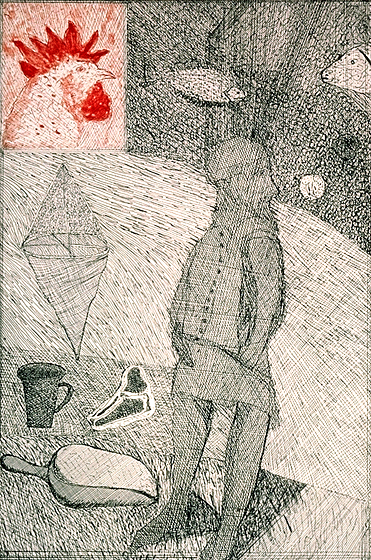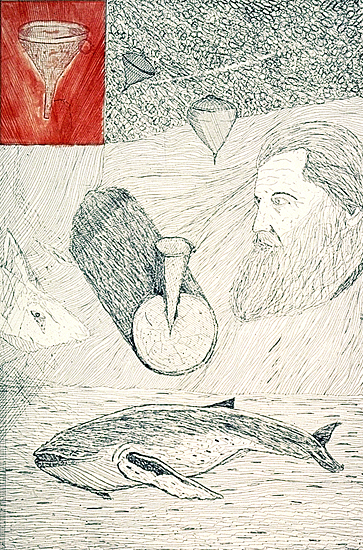Italo Scanga was born in the Calabria region of Italy in 1932. His father, Guiseppe, worked in America in the coal mines of western Pennsylvania and would travel back to Italy to visit his family. At the onset of World War II, the senior Scanga was in America and unable to get his family out of Italy. It was only in 1947, after the war, that the family was able to emigrate to Pennsylvania. The war years were a formative experience for the younger Scanga, and its deprivations informed his art.
From 1953-1955, Scanga served in the US Army, and was stationed in Austria in an armored tank division. In 1956, Scanga married his first wife, Mary Louise Ashley, a librarian, and over the following years they had five children. With help from the GI Bill, Scanga received his BA and MFA from Michigan State University in 1960 and went on to teach at the University of Wisconsin; Brown University; Tyler School of Art; and Rhode Island School of Design, where he met lifelong friend and collaborator, Dale Chihuly. In 1978, Scanga permanently moved to La Jolla to teach at the University of California, San Diego.
Italo Scanga worked in various media, including glass, ceramics, painting, and printmaking; he often used objects found in thrift shops, flea markets, and antique shops in his assemblages. His southern Italian heritage influenced much of his work; he incorporated items that were reminiscent of peasant life. “I’m a sponge,” said Scanga in San Francisco Focus magazine. “I take things from everywhere: the sun, the ocean, art.” His work is often classified as neo-Dadaist, neo-Expressionist, or neo-Cubist. Scanga was fascinated by mythology, religion, and politics and his sculptures are a visual language with themes of the ego, fear, religious rituals and iconography. “I always work with positive and negative, rationality and irrationality, day and night, very basic things,” he said.
In 1983, Scanga’s work was included in the Whitney Biennial at the Whitney Museum of American Art. That year, he married his second wife Stephanie Smedley, an artist. He constructed his first public commission with the help of his son in 1984 in Mammola, Italy and they continued creating public commissions throughout the following years. His first retrospective, “Italo Scanga: Recent Sculpture and Drawings” was in 1986 at the Oakland Museum, Oakland, California. After eight years and a second divorce, Scanga met Su-Mei Yu, a chef, who became his companion until the end of his life.
Italo Scanga died of heart failure in 2001 at the age of 69. Before his death, he finished a major work commissioned by the San Diego International Airport titled Continents. His work is in the permanent collections at the Hirshhorn Museum and Sculpture Garden, Washington, D.C.; Los Angeles County Museum of Art, Los Angeles, CA; Yale University, New Haven, CT; and the Metropolitan Museum of Art, New York, NY. Select solo exhibitions were held at Baylor Art Gallery, Baylor University, Waco, TX (1969); The Whitney Museum of American Art, New York, NY (1972); and Los Angeles County Museum of Art, Los Angeles, CA (1983). A foundation was set up in Italo Scanga’s name after his death to function as a nonprofit foundation for the preservation of his artwork and to help fund a Visual Arts Scholarship at the University of California, San Diego.
-Carleigh Koger
BOOKS ABOUT THE ARTIST









